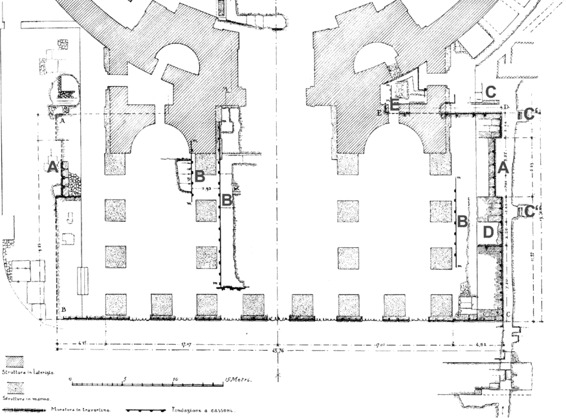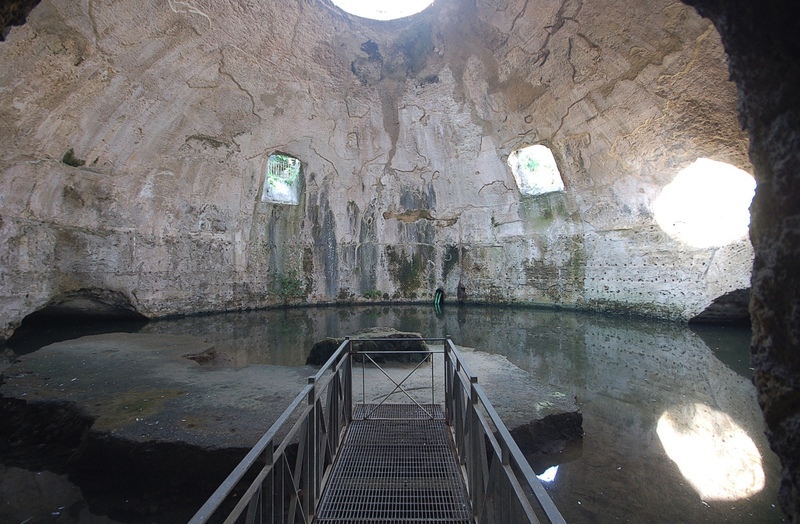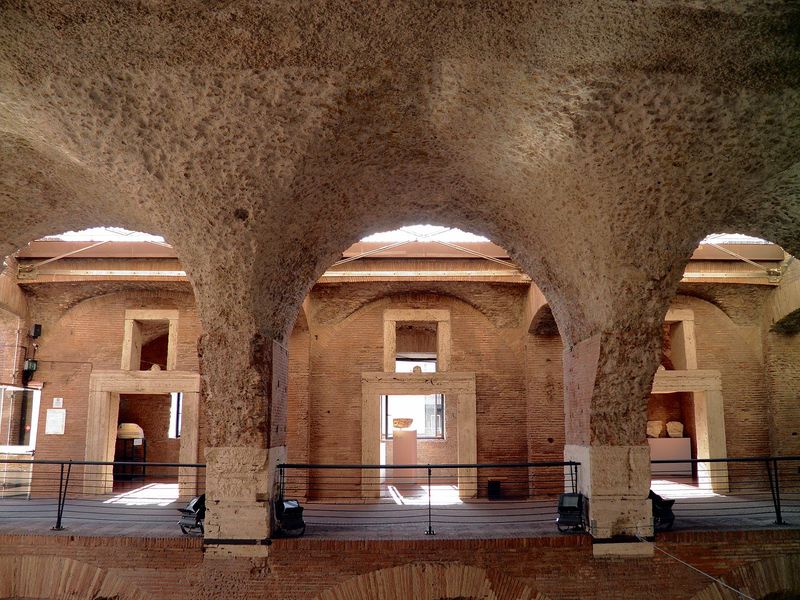Vestiges of the Past

Plan showing the findings of an excavation in the late-19th century. "A" indicates the width of the pre-Hadrianic portico, which was discovered underneath "B", which shows the current foundation of the podium.
Original Form
The original structure of the Pantheon is still yet to be understood. Excavations have only recently revealed that today’s Pantheon shares quite a few similarities with its Agrippan predecessor. Early historians had erroneously hypothesized that the cella was originally rectangular and that the entrance faced the south.1 After several excavations performed in the nineteenth-century, archaeologists found a staircase right underneath the current one, as well as remnants of pillars underneath the portico.2 Such discoveries proved that perhaps the reconstruction preserved the integrity of the original plan more closely than we had anticipated.

View of the so-called Temple of Mercury, Baiae. Such Greek baths with circular orientations and an oculus were the predecessors of the Roman monumental dome.
Precedents
Even prior to the Pantheon’s construction, ancient architects had experimented with and studied round building design and concrete construction. Circular plans were utilized for tombs and religious sites, but never commonly or in monumental scale.3 Public bath complexes, such as those at Pompeii, had round rooms with domes and an oculus (open circle at the center of the dome) that provided the bathers with light and ventilation. Concrete allowed for larger, sturdier structures with untraditional plans. Nero’s palace, the Golden House, for instance, had a groundbreaking octogonal room. Roman architects, who were knowledgeable about Greek construction practices, were aware of the limitations of traditional, rectilinear post-and-lintel techniques.4 Their development and usage of concrete, successful construction of huge aqueducts and bridges, and engineering capacity proved that the monumental rotunda, with Rome’s technology, was feasible.

An image of the Markets of Trajan; the Pantheon was created using the same brick-faced, vaulted architecture.
Roman Engineering
The cross or groin vault, an intersection of two barrel vaults (essentially two vaults conjoined at a perpendicular angle), allowed for much more open space and light within the buildings. A few years prior to the Pantheon, the Markets of Trajan utilized this feature to support a monumental roof.5
Within the Pantheon, columns encircle the rotunda. This gives the illusion that they function as the traditional, post-and-lintel support for the immense ceiling, when, in reality, concrete drum bears most of the weight of the vaulted dome above.
1 Tom Marder and Wilson Jones, The Pantheon: From Antiquity to the Present, (New York: Cambridge UP, 2015), 5.
2 Eugene La Rocca, "Agrippa's Pantheon and its Origin," in The Pantheon, ed. Marder and Jones, (New York, NY: Cambridge UP), 64.
3 William MacDonald, The Pantheon: Design, Meaning, and Progeny, (Cambridge: Harvard UP, 1976), 50.
4 Ibid., 54.
5 Ibid., 57.